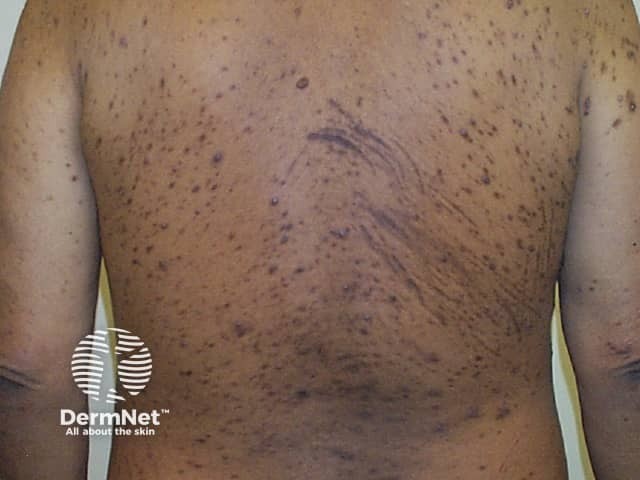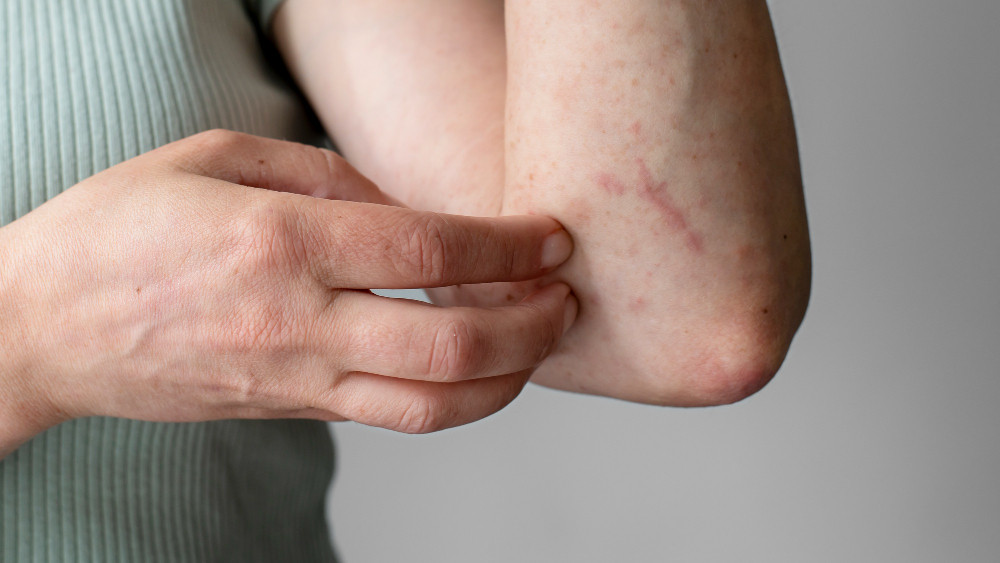Penyakit ginjal pada tahap awal sering kali tidak menunjukkan gejala yang jelas. Seiring dengan berkembangnya penyakit, Anda mungkin merasakan gejala lainnya, yaitu masalah pada kulit. Beberapa masalah kulit yang sering muncul terkait dengan penyakit ginjal di antaranya kulit gatal, muncul ruam merah, hingga perubahan warna.
Masalah Kulit Akibat Penyakit Ginjal
Dilansir dari American Academy of Dermatology Association, beberapa masalah kulit yang berkaitan dengan masalah ginjal antara lain:
Kulit kering
Kulit kering banyak dialami pengidap penyakit ginjal stadium akhir yang membutuhkan dialisis atau transplantasi ginjal. Gangguan fungsi ginjal membuat penurunan kandungan air pada kelenjar epidermis kulit sehingga kulit menjadi kering, kasar, dan bersisik. Gejala lain yang muncul adalah kulit terasa kencang seperti tertarik dan mudah pecah-pecah.
Kulit gatal
Kulit gatal atau pruritus merupakan gejala umum penyakit ginjal stadium lanjut, tetapi juga bisa dialami pasien gagal ginjal stadium awal. Anda mungkin merasakan gatal yang terus-menerus sepanjang hari, baik di satu area kulit maupun menyebar ke sebagian besar tubuh Anda.
Untuk meredakan rasa gatal, biasanya pasien terus-menerus menggaruk area yang gatal. Kebiasaan menggaruk berlebihan ini dapat menyebabkan kulit berdarah atau luka, tebal dan kasar, juga muncul benjolan keras yang sangat gatal (nodularis prurigo). Dokter dapat memberikan terapi fototerapi UVB untuk meredakan rasa gatal.

Baca Juga: Penyebab Tumor Ginjal dan Cara Penanganannya
Perubahan warna pada kulit
Pengidap penyakit ginjal juga dapat mengalami perubahan warna kulit akibat penumpukan racun yang tidak berhasil terbuang sempurna. Beberapa gejala perubahan warna kulit yang dapat muncul antara lain:
- Warna pucat yang tidak sehat
- Kulit berwarna keabu-abuan atau kekuningan
- Area kulit yang gelap
- Kista dan bintik yang tampak seperti komedo putih
Pembengkakan
Ginjal bertugas membuang kelebihan cairan dan garam dari tubuh. Ketika fungsi ginjal terganggu, hal ini dapat menyebabkan pembengkakan di beberapa bagian tubuh seperti kaki, pergelangan kaki, tangan, dan wajah.
Ruam
Gangguan proses pembuangan limbah oleh ginjal juga dapat menyebabkan munculnya ruam. Ruam pada pengidap ginjal stadium akhir dapat berupa benjolan kecil, berbentuk kubah, dan sangat gatal. Setelah benjolan ini hilang, akan muncul benjolan yang lain dan membentuk bercak kasar dan menonjol.
Baca Juga: Penyebab Umum Penyakit Ginjal Kronis pada Anak
Melepuh
Pengidap penyakit ginjal stadium akhir juga dapat mengalami kulit melepuh pada tangan, wajah, dan kaki. Lepuhan pada kulit akan terbuka, mengering, dan mengeras. Ketika lepuhan menghilang maka akan muncul bekas luka.
Endapan kalsium di bawah kulit
Salah satu fungsi ginjal adalah menyeimbangkan mineral tertentu dalam darah seperti natrium dan fosfat. Jika ginjal tidak dapat menjaga keseimbangan cairan, maka kadar natrium dan fosfat akan meningkat, sehingga memicu terbentuknya endapan kalsium.
Endapan kalsium biasanya terbentuk di sekitar sendi dan tidak menimbulkan rasa sakit. Namun jika endapan terjadi di ujung jari, hal ini dapat menyebabkan rasa sakit yang hebat.
Penyakit ginjal dapat menyebabkan masalah kulit seperti gatal atau ruam. Masalah kulit ini dapat terjadi pada stadium awal, namun paling umum terjadi pada stadium lanjut. Jika terjadi, ruam dapat muncul di seluruh tubuh atau hanya di area tertentu. Sebaiknya hindari menggaruk area yang gatal secara berlebihan karena dapat menyebabkan lesi dan luka lain pada kulit.
Jika memiliki pertanyaan seputar masalah kulit dan penyakit ginjal, Anda dapat berkonsultasi ke dokter. Anda juga bisa memanfaatkan fitur konsultasi pada aplikasi Ai Care yang bisa diunduh melalui App Store atau Play Store.
Mau tahu informasi seputar penyakit lainya? Cek di sini, yah!
- dr Nadia Opmalina
American Academy of Dermatology Association. Available from: https://www.aad.org/public/diseases/a-z/kidney-disease-warning-signs#
Fletcher, J. (2023). What to know about itchy skin and rashes with kidney disease. Available from: https://www.medicalnewstoday.com/articles/rash-kidney-disease-itchy-skin
Fields, D. Renal Disease and Skin Problems. Available from: https://www.news-medical.net/health/Renal-Disease-and-Skin-Problems.aspx
National Kidney Foundation. Chronic Kidney Disease – Associated Pruritus (Itchy Skin). Available from: https://www.kidney.org/kidney-topics/chronic-kidney-disease-associated-pruritus-itchy-skin












